With one of us at the stern, the other at the bow, we lift our Savo 650D off the boat trailer, step to the water, and swing the bow until the boat is perpendicular to the shore. When we set it down, it balances on the smooth surface of the water like a leaf that has just landed with a whisper, light as a feather. We’ve set it in the water hundreds of times, yet the sense of the boat’s spirit always comes alive at that moment when its hull alights on the water.
We often imbue certain inanimate objects with human qualities. We have bonded strongly with our boat, and think of it as an individual with its own personality. It sounds a bit crazy, but perhaps it has something to do with the strong emotions, both good and bad, that we have experienced while rowing it. Slipping across a perfect glassy mirror of salt water at sunset, awash in pinks and blues, gold and silver. Bashing across the chaos of Petit Manan bar off the Maine coast, in an opposing wind and tide, our every fiber focused on not tipping over, and looking up to see a jellyfish in the crest of a wave above our heads. Riding the long lazy swells of a perfect summer morning on the ocean, and wishing we could keep rowing to the horizon and beyond. Maybe it is a strong sense of gratitude that creates a deep connection with, and subsequently a persona for, an object. NORPPA, as our Savo 650D is named, is eager and spirited, somewhat sassy, and a bit wayward. She detests rocks, especially large ones that are barely awash and sneak up on her from nowhere. She loves attention and pampering.
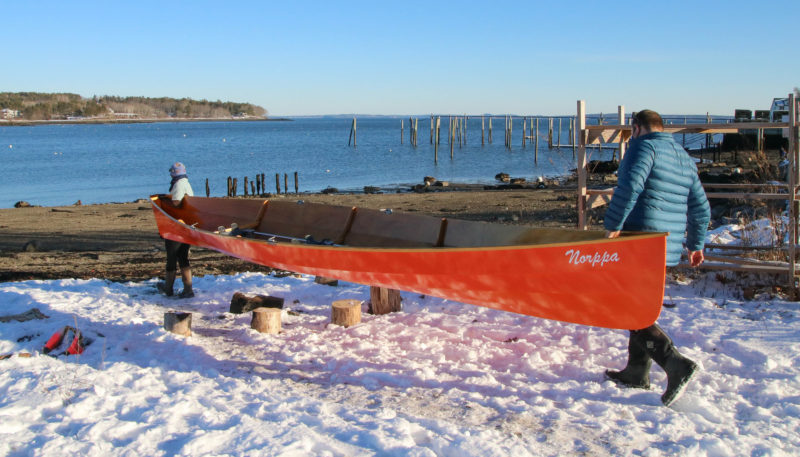 Photographs by Murray Carpenter
Photographs by Murray CarpenterWeighing 101 lbs with the rowing rig installed, the Savo 650D is a manageable carry for two. Dowels set across the ends serve as handholds.
The Savo 650D’s predecessors were traditional rowboats built and used in Savonia, a Finnish province crisscrossed with a network of navigable freshwater lakes and rivers. The rowboats were a fixture of everyday life, used for exploring, fishing, transport, and visiting. Children were borne by rowboat to their baptismal ceremonies, and family members rowed their deceased to their final destinations. After a lifetime of dependable service, Savonian rowing boats were traditionally burned at the midsummer bonfires.
The Savo 650D from Puuvenepiste in Finland features a hull of glued-lap planks of 6mm marine-grade plywood over three laminated frames. The plans offer a three-strake version designed for a combined crew weight of 350 lbs or more and a four-strake version for crews weighing less. Together, the two of us weigh close to 350 lbs, and we have the tendency to load a lot of gear for camping trips, so the three-strake version might have been the better choice, but the four-strake version came to us serendipitously, and it has worked well for us.
Designed to be light, the Savo 650D’s keelson, gunwales, and frames are made of pine or spruce. The fully equipped boat weighs in at just over 100 lbs. The length is 21′ 4″, with a nearly plumb bow and stern so its waterline is virtually the same as its overall length. The hull flares wide at the gunwales and tapers to a V-bottom that is shallowly curved amidships, and narrows sharply at bow and stern. Its interior is simple and clean, with only three frames and the sliding seat system, so there’s lots of room for stowing gear.
With the boat bare for racing, it draws only 4″. Loaded for a multi-week camping trip, it sits a bit lower, but handles even better. Though we didn’t build the boat ourselves, a kit version is available and comes with detailed instructions and diagrams.
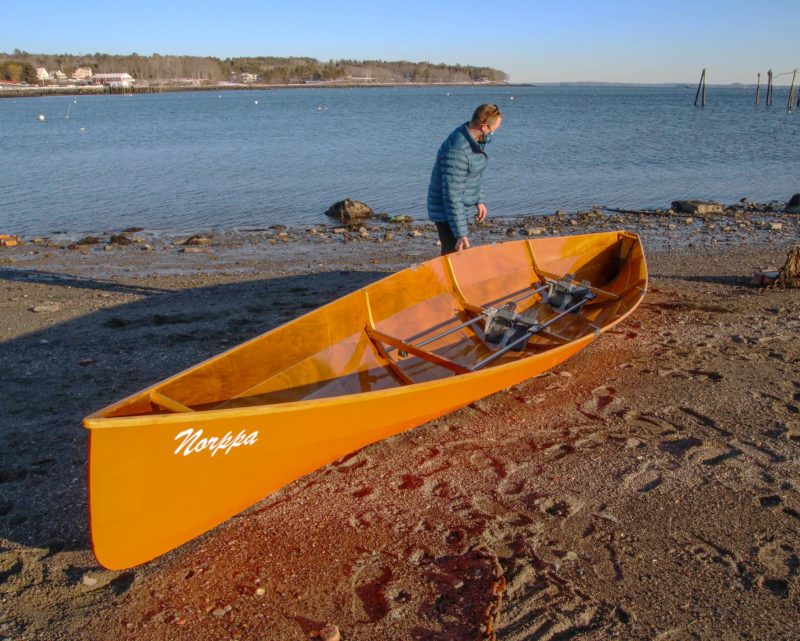
The two tubular rails support two Poseidon rowing stations. They can be adjusted to position a single rower for proper fore-and-aft trim. The sliding seats are not in place here.
The Savo 650D is designed for two rowers, though it is simple to outfit the boat with a third set of oarlocks to row as a single as well (though there’s also a version of the boat—the Savo 575—that is designed as a single). The 650D is equipped with two Poseidon sliding seats, which have concave wheels that rest on round stainless-steel rails. This setup is a huge improvement over most sliding-seat systems, which have convex wheels that fit down into concave rails that collect all manner of grit and debris making for lots of friction and extra maintenance. Any debris that falls on the Poseidon rails just drops off. The foot stretchers are clamped onto the sliding seat rails, and can be easily loosened to slide the foot stretcher to any position to accommodate taller or shorter rowers, or to set the boat up to row as a single.
There are no storage or flotation compartments—the Savo’s original purpose is to be a racing boat. If you’re considering taking the Savo out for an extended open water expedition that may land you in rough water, you’ll want to consider lashing some sort of flotation into the boat.
We transport our Savo on a lightweight aluminum trailer, but in Finland, where these boats are common, they are often cartopped. At 100 lbs, the boat can be lifted on and off the trailer or car top by two fairly sturdy people with relative ease.
Compared to a racing shell, this boat is quite stable. Compared to many traditional wooden rowing boats, it feels a bit tender. It is somewhere between the two in terms of stability, but closer to a traditional rowboat. With its V-bottom and wide flare at the gunwales, it lacks a little in primary stability, but makes up for it in secondary stability. In rough water you’ll be in for a bit of a wild ride, but it won’t go over. We once did a test to see what it would take to flip the boat and found that it took both of us getting off our seats to lean all of our weight out over the gunwale. That being said, when loading the boat with gear it’s important to take care to distribute the weight evenly. It is sensitive to small differences in port/starboard loading. Also, with its relatively light weight and large freeboard, wind on the beam can heel the boat. It is minor yet noticeable; sometimes it helps to have some ballast available to counterbalance a wind-induced heel.
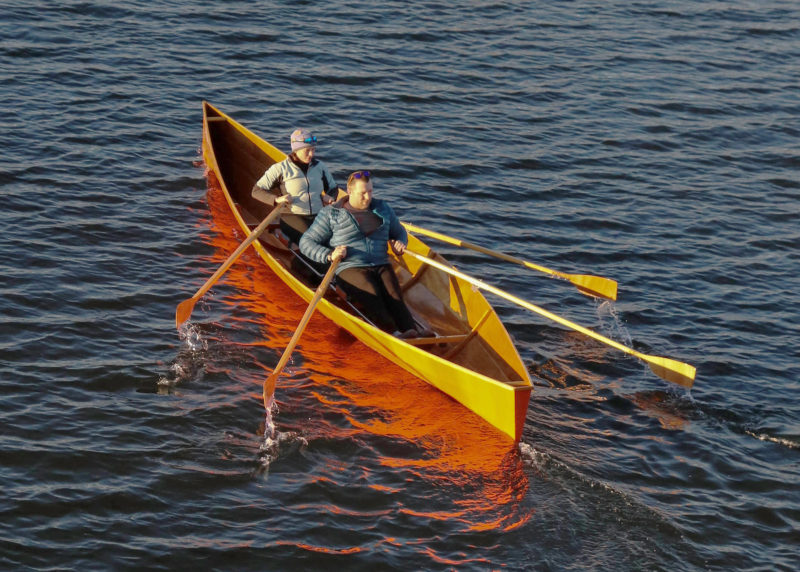
The standard oarlocks for Finnish rowing are pins through the looms preventing the oars from being feathered, an advantage on long hauls. The oars here are not the standard Savo oars but the ones we used on our expedition Savo, with blades about 10 percent larger.
Finnish racing rules don’t permit oarlocks that allow the oar blades to feather, so the Savo is equipped with Sarana oarlocks, hinged pins that pass through bushings in the center of the oar looms. These non-feathering oars were a revelation to us. The pin system is ingeniously simple, and makes great sense for long-distance rowing. Though not being able to feather may at first seem a limitation, it is in fact a great bonus. The blade is always at the perfect position at the catch and no energy is wasted on feathering. And the traditional Finnish blades are slender enough that only the strongest headwinds have caused us to momentarily wish we could feather. The other 95 percent of the time, we dearly appreciate not having to think about blade angle at every catch, and our forearms are happy to forgo feathering, especially on the long-distance rows that we enjoy so much.
The Savo’s oar shafts are laminated spruce or pine, with hatchet blades made of marine plywood. Overall length of the oars is 8′ 4″, with blades approximately 17″ long by 5″ wide. Despite the relatively small size of the blades, we have found that they keep the boat clipping along nicely. One thing that may take some getting used to for American rowers is the amount of cross-over of the oar handles, which is much greater than that in most rowing or sculling boats in the U.S. That cross-over provides the right amount of leverage for oars that are mounted on the gunwales with no outriggers, but it does feel a bit different at first. While learning to row in rough water, the cross-over can be a contributing factor to bruises and scrapes on your hands and arms. But this is not an issue on flat water, and is overcome with practice in rougher sea states.
We have rowed our two Savos—one standard, the other equipped with decks, bulkheads, and a kayak rudder for the Race to Alaska—hundreds of times, in all conditions, and for very long stretches across open water off the coasts of Maine and British Columbia, and have found joy in all of it. These boats have carried us safely across rip tides and whirlpools, over ocean swells, and through the worst chop that our home waters of Penobscot Bay can whip up. On calm water, the Savo is a dream to row; it skims along with long glides between strokes and you almost feel like you are flying. It seems to barely notice a slight chop; it’s not uncommon for us to be out in 1′ to 2′ chop and stay dry. In rougher water, it can be quite fun, once you acquire the skills to stay on your seat and keep time with your partner. Any minor downsides to rowing the Savo that we have noticed are probably only due to our continued insistence on taking the boat out into water and conditions that are not usually encountered on the lakes of Finland.
Due to its relatively light weight, moderately high freeboard, and shallow draft you’ll need to row with quite a crab angle to make up for the effect of a strong wind on your course over ground.
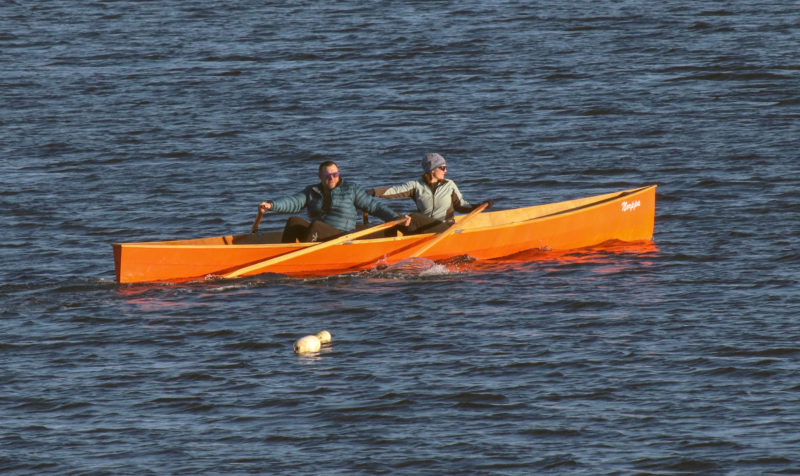
The Savo 650D’s long waterline makes for slow turning, so trailing the oars on the inside of a turn to serve as rudders can help bring it around more quickly.
The Savo’s long waterline and V-bottom give it good speed and tracking along a straight-line course. The trade-off is a reluctance to turn sharply. We routinely drag an oar (sometimes two) to act as a rudder to assist a course correction or a larger turn. The original Savo does not have a rudder, or any kind of skeg or fin. It tracks fairly well upwind, but can be a bit squirrely in a downwind swell, suddenly taking 30- to 60-degree turns out of the blue when its stern gets caught by a wave (not an unusual trait for small boats). We have become adept at quickly dragging an oar on the fly to correct these sudden departures from our intended course. To be sure, steering issues are much less of an issue on flat, inland water, and in any case can be overcome with experience and practice.
The Puuvenepiste website states that the 650D can attain speeds of up to 9 knots (for a short period with exceptional rowers), and cruising speeds of 4.5 to 5.5 knots. We have briefly achieved speeds in excess of 8 knots, and have consistently achieved cruising speeds right in line with the designer’s range. In 2018, the Savo 650D was our boat of choice to row the entire Maine coast, 260 miles from Kittery to Lubec. We chose the Savo because of its capacity to hold all our camping gear with ease while maintaining a great cruising speed. Even with our increased payload on the trip we averaged 29 miles a day, and when we got to the end we wished we could keep going.
Over the past three years of rowing the Savo, we have gradually built our skills and learned to trust the boat in rougher and rougher water. We do all of our rowing on salt water, mostly on the coast of Maine. At first, it was nerve-wracking to be out in 2′ chop. Now, we have rowed across long stretches of open water in steep, choppy, 5′ waves, and have been in swells of up to 8′. Although the Savo was designed for flat-water racing on the lakes of Finland, we have found it to be quite seaworthy. In very rough, steep seas from 4′ to 7′, we have had to regularly stop and bail, but in sea states that are more typical for rowing, the boat stays dry inside. The greater barrier to rowing in rough water has not been the boat, but our own level of confidence and skill with the oars. It takes time and patience to learn how to row well, and stay in sync, when the boat is pitching all over the place.
The Savo 650D lies somewhere on the spectrum between the ultra-slim, lightweight racing shell and the heavier, more stable traditional rowboat; all in all, we find it to be the best of both worlds. It is fast, yet dry in most sea states. It is light, yet sports beautiful, traditional lines. If you’re a sliding-seat rower who wants to enjoy that amazing, weightless feeling of skimming along across a mirror-like surface, you can do that, and probably win some open-water races while you’re at it. If you’re a busy person trying to spend time in the outdoors while also getting in a good workout, you won’t have to bend and warp your life schedule around finding perfect flat-water conditions; you can go out in a bit of wind and chop. If you live for adventure and you want a boat that you can load with camping gear and shove off for multiple weeks away from modern life, you can do that, too. The Savo is also a great training boat for beginners. With its wider beam and freedom from feathering, newcomers to sliding-seat rowing find the Savo to be a much more forgiving, less frustrating boat than a typical shell. Yet, experienced rowers will find much to love as well; if you’re like us, you’ll find that the boat’s extreme seaworthiness will have you continually testing yourself in more and more rugged conditions.![]()
Leigh Dorsey and Dameon Colbry are rowing addicts lucky enough to be living on the coast of Maine. They have found no more enjoyable way to experience the sea than in a small boat, and no more rewarding journey than one completed under their own power. They feel a strong connection to the generations of humans who explored their world by oar and paddle.
Savo 650D Particulars
[table]
Weight, equipped/101 lbs
Length /21.3′
Beam /4.2′
Depth/24.6″
Displacement/441 lbs
Waterline length/21′
Waterline beam/29.4″
Draft/4.5″
Freeboard/12.6″
[/table]
Finished boats and kits for the Savo 650D are available from Puuvenepiste in Finland. Old Wharf Dory is the authorized builder in the U.S. Kits in the the U.S. are available from Hewes & Company in Blue Hill, Maine.
Is there a boat you’d like to know more about? Have you built one that you think other Small Boats Magazine readers would enjoy? Please email us!
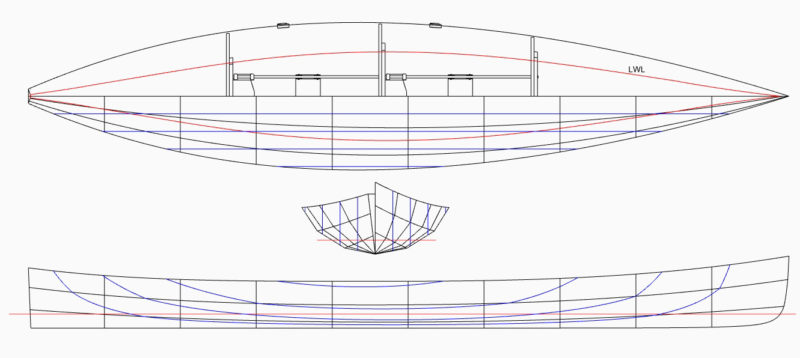
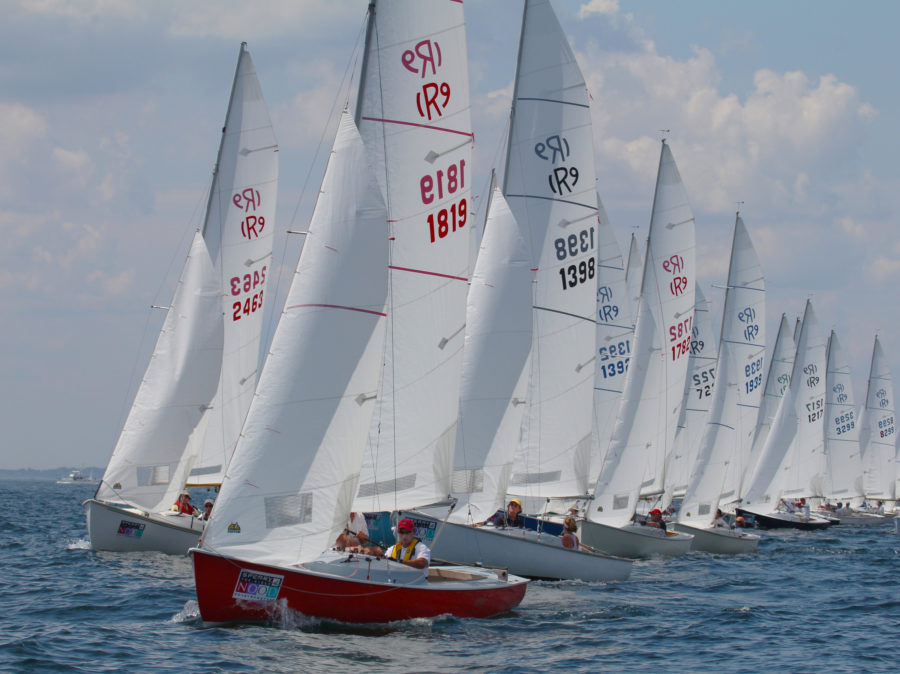
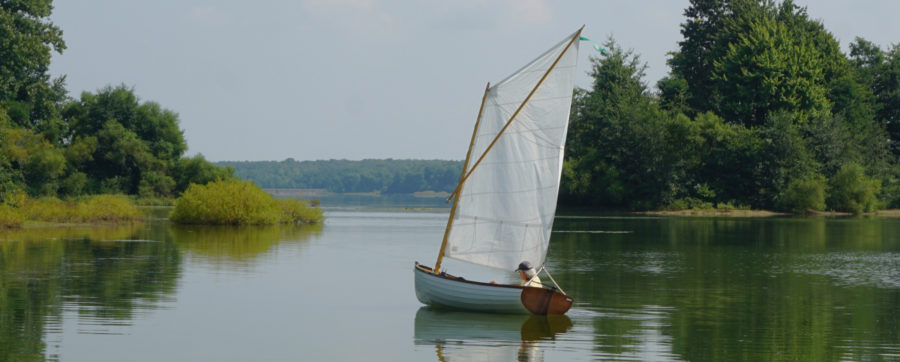
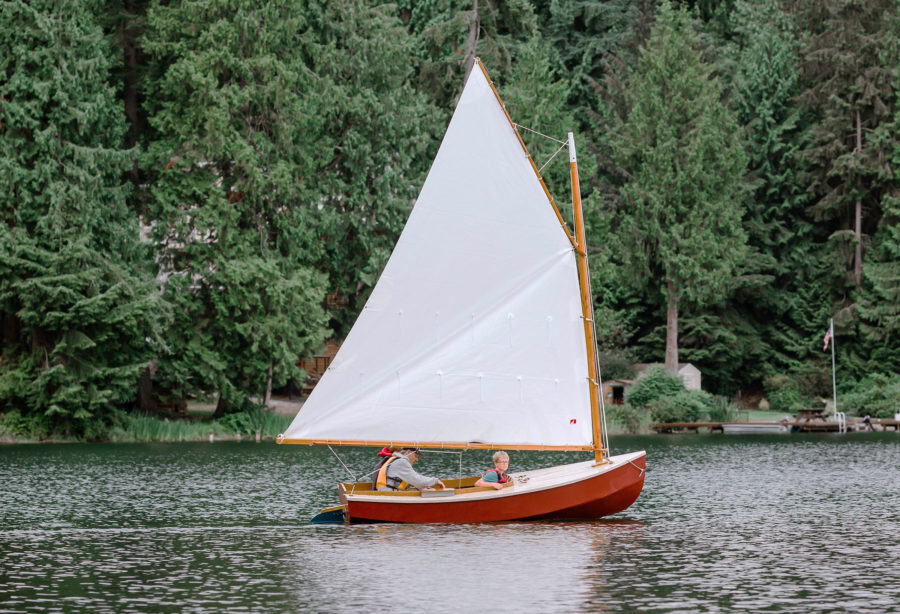
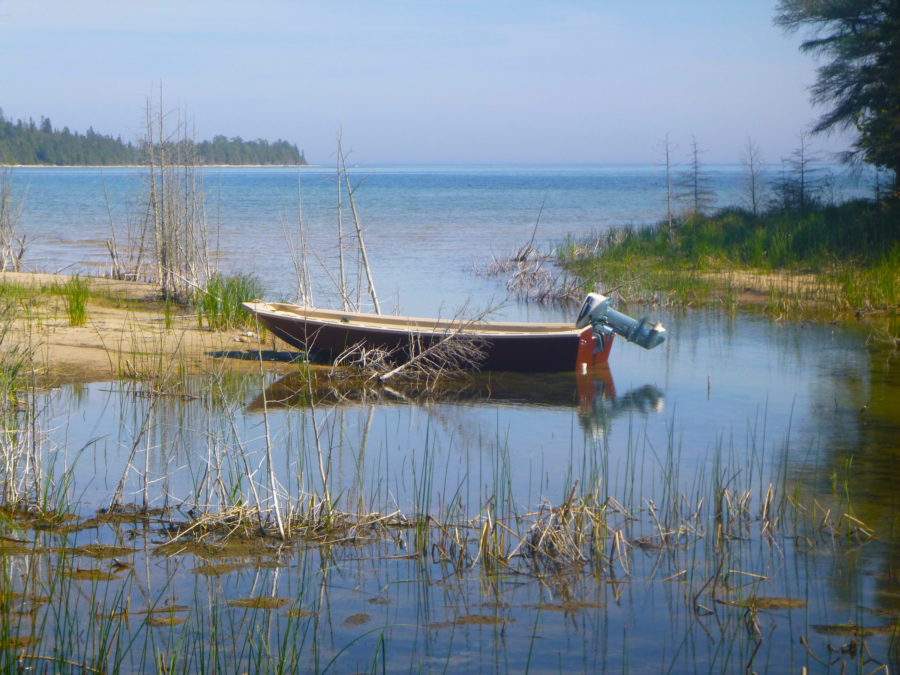
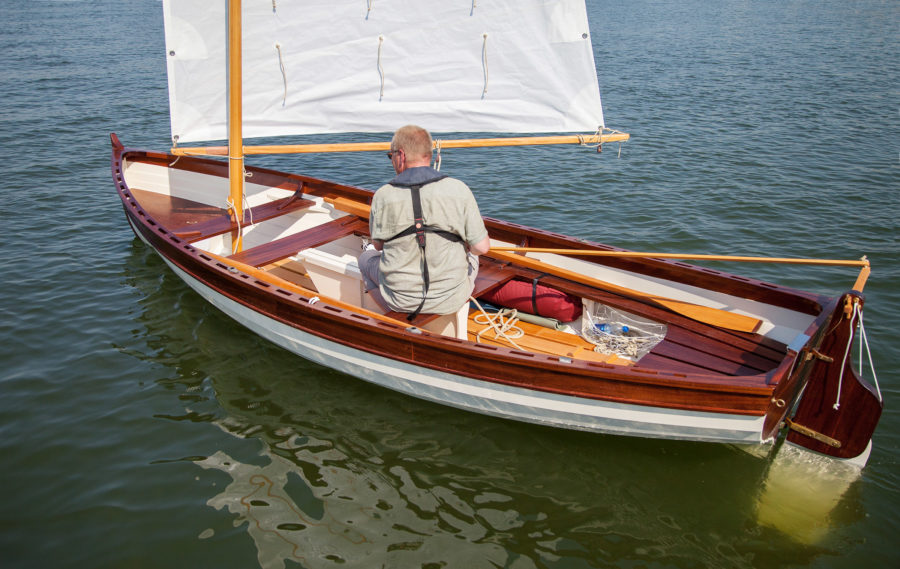
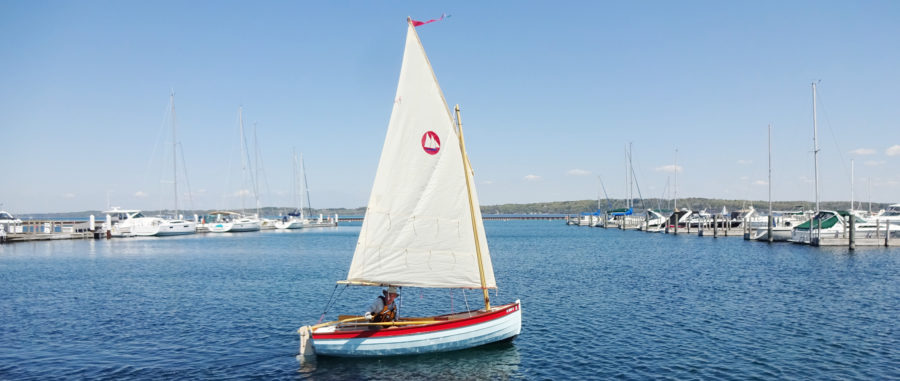
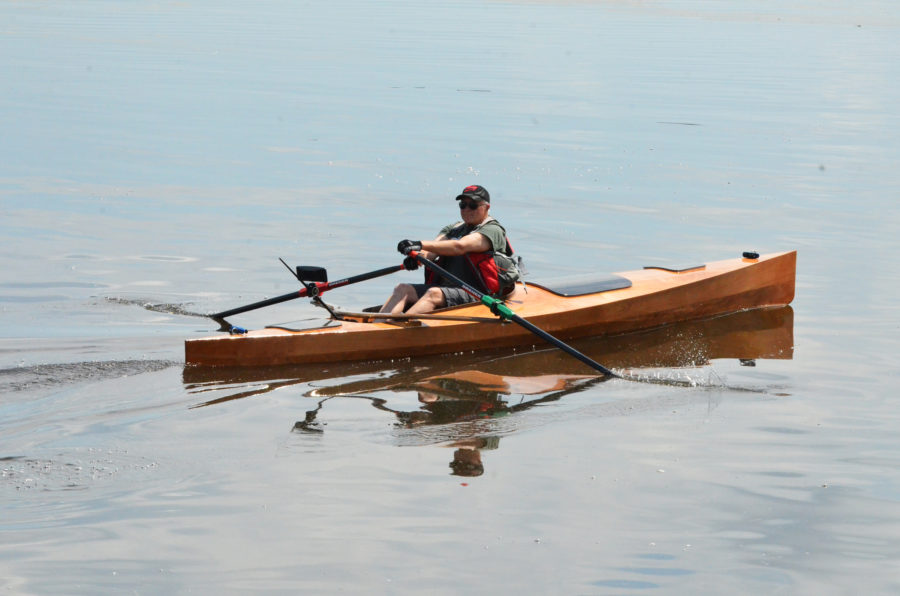
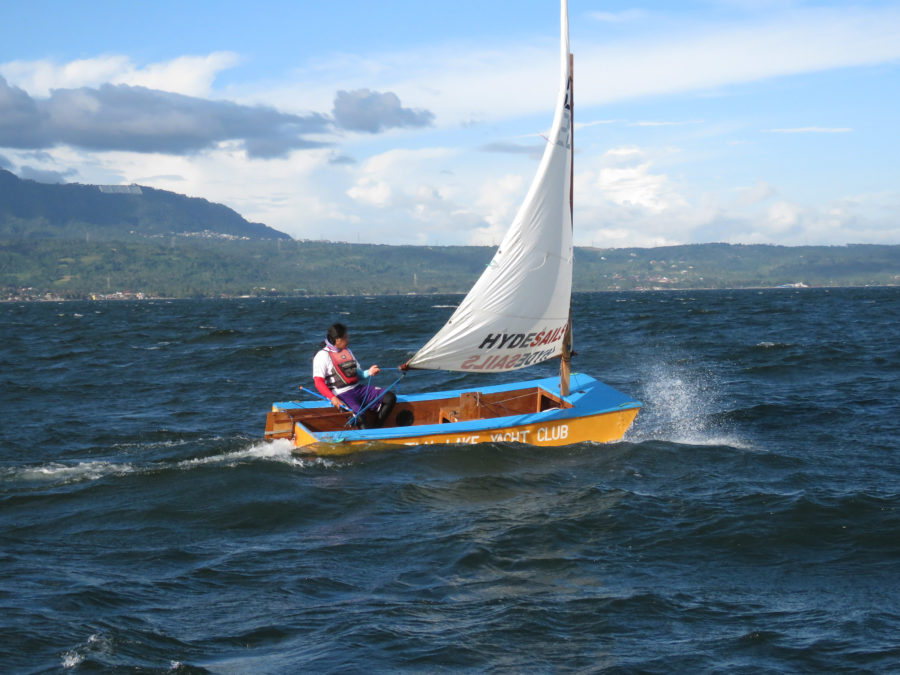
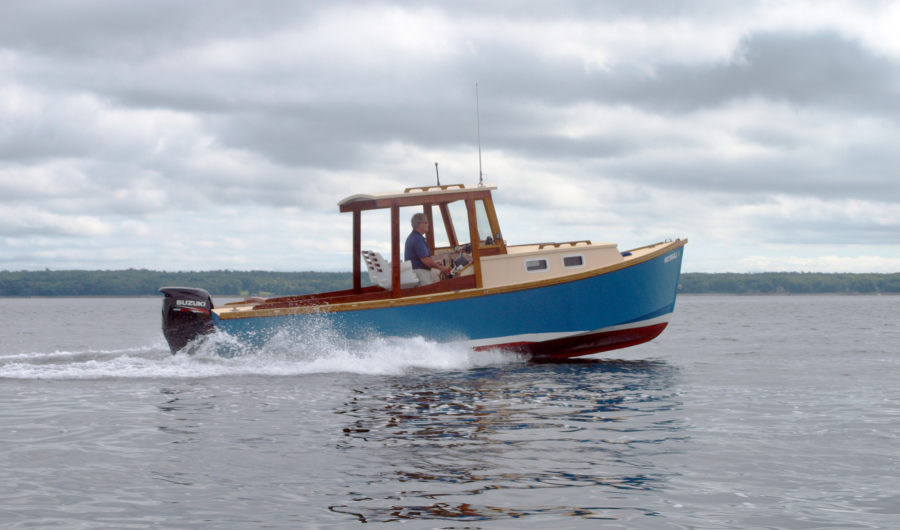
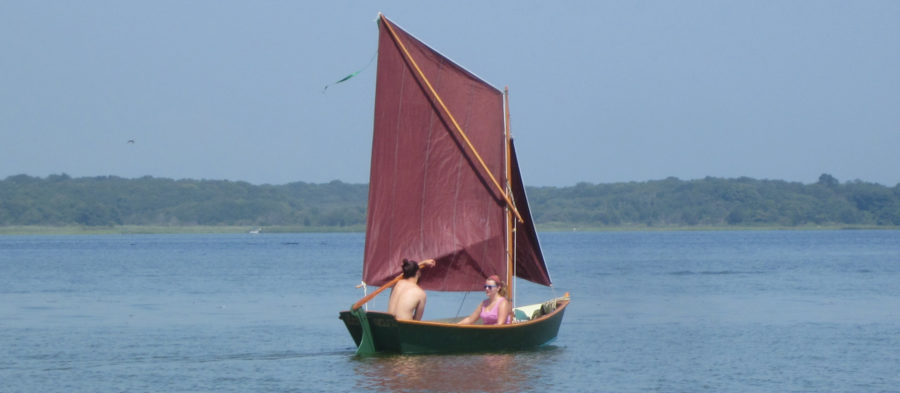
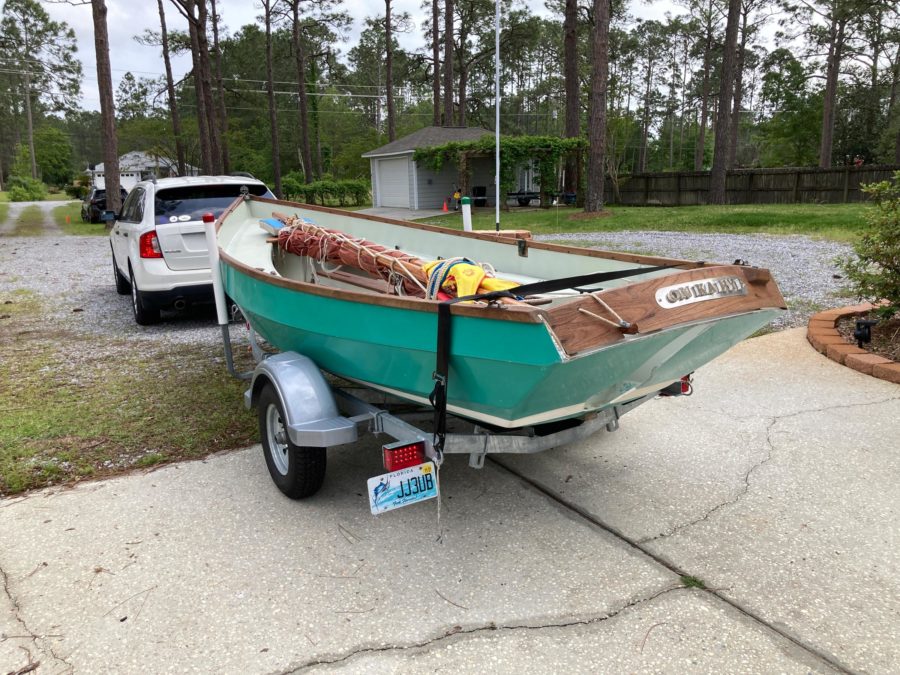
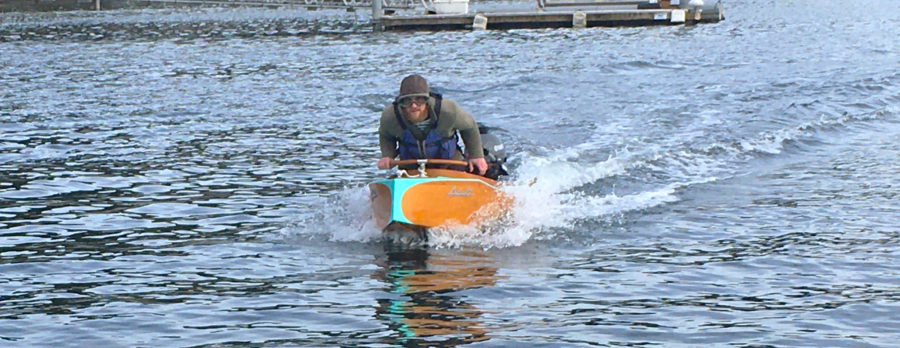
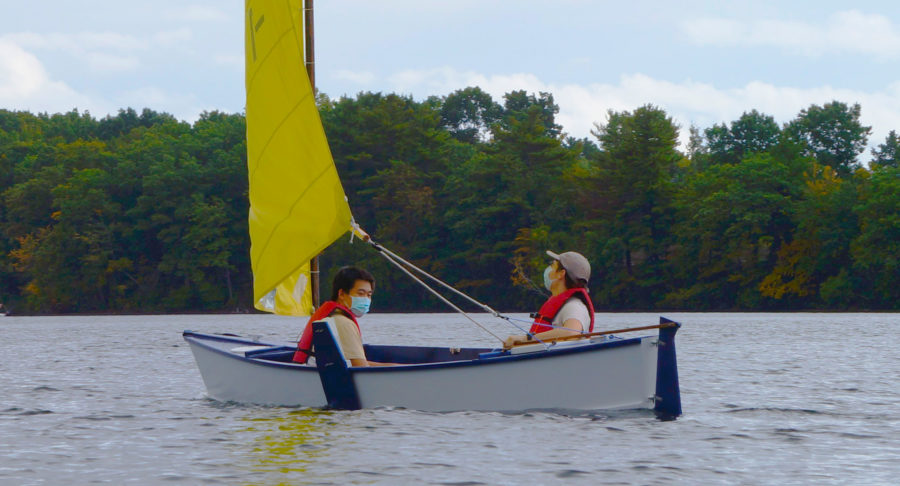
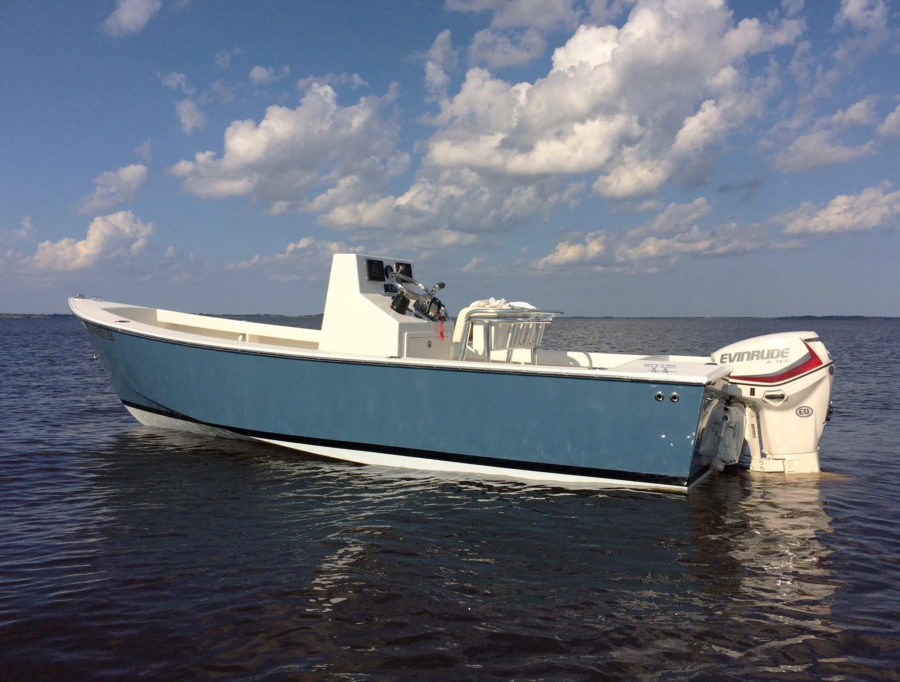
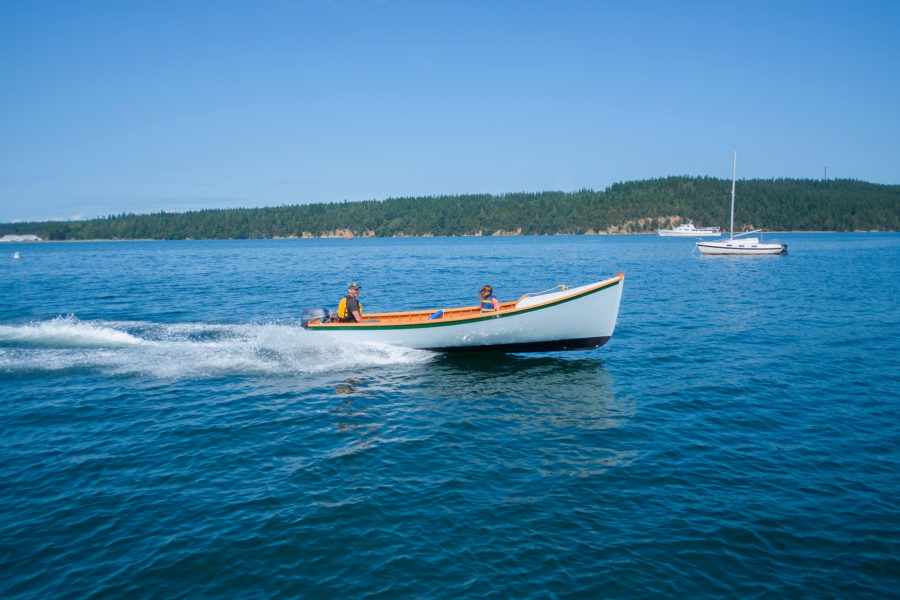
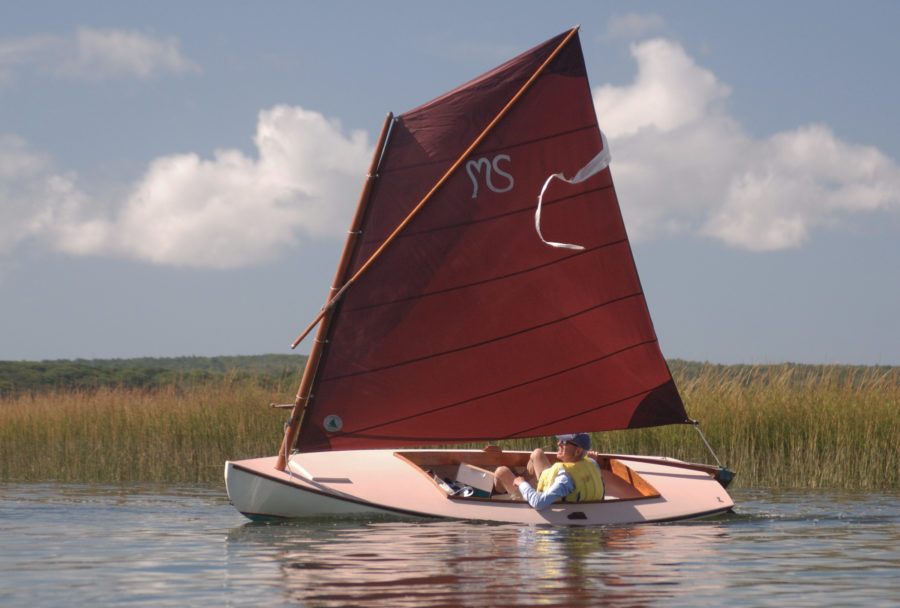
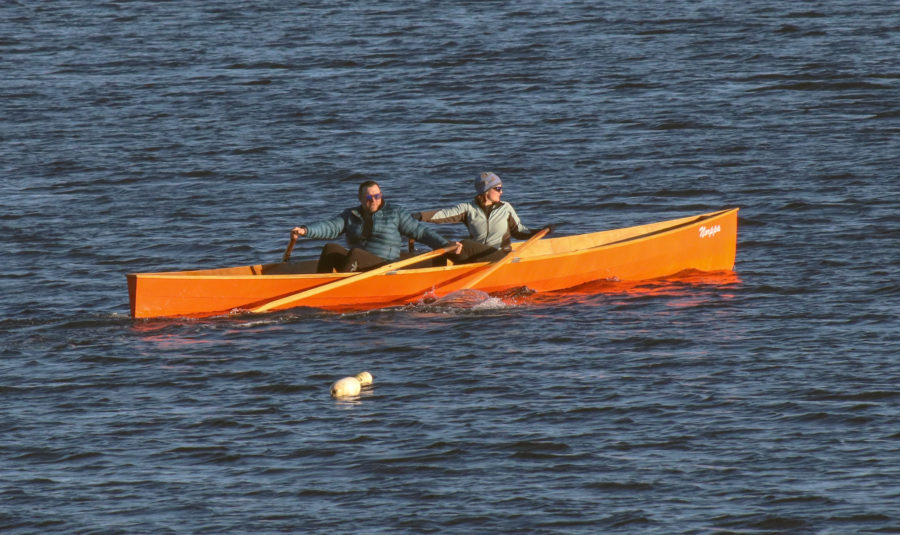
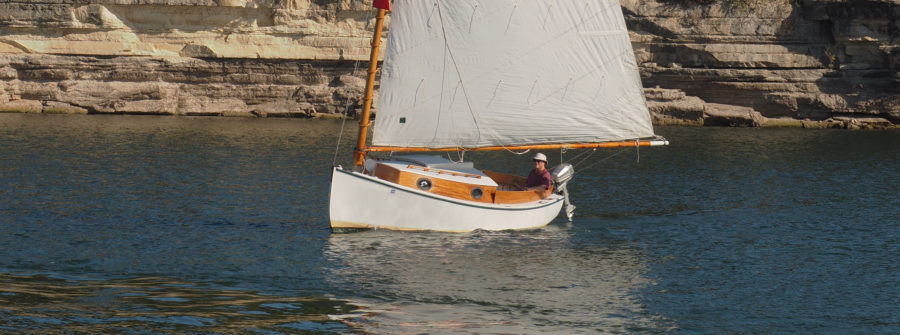
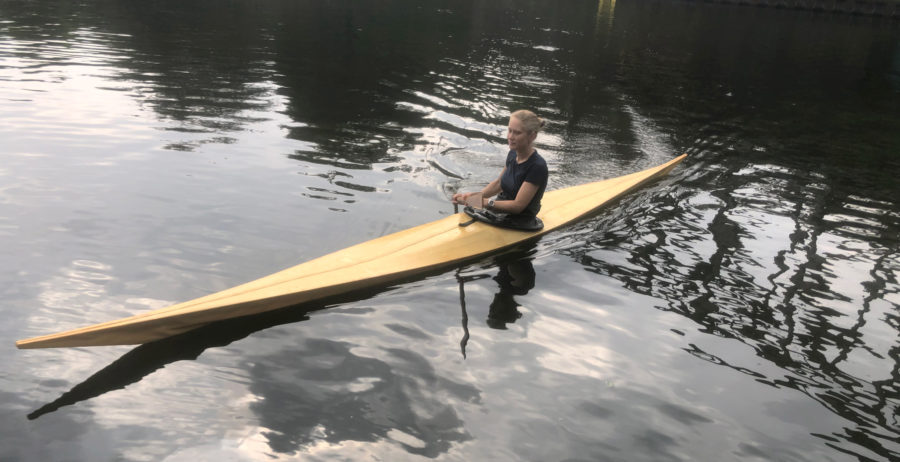
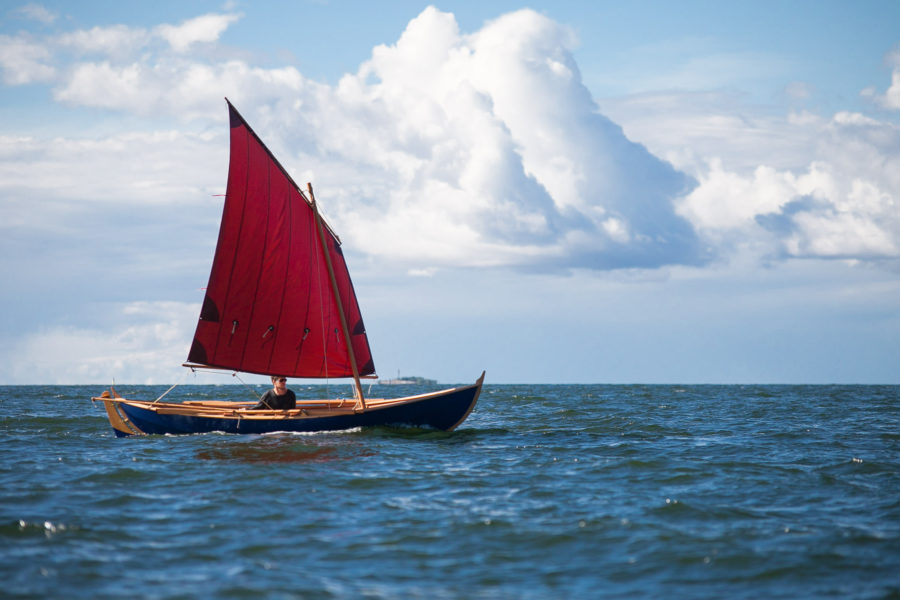
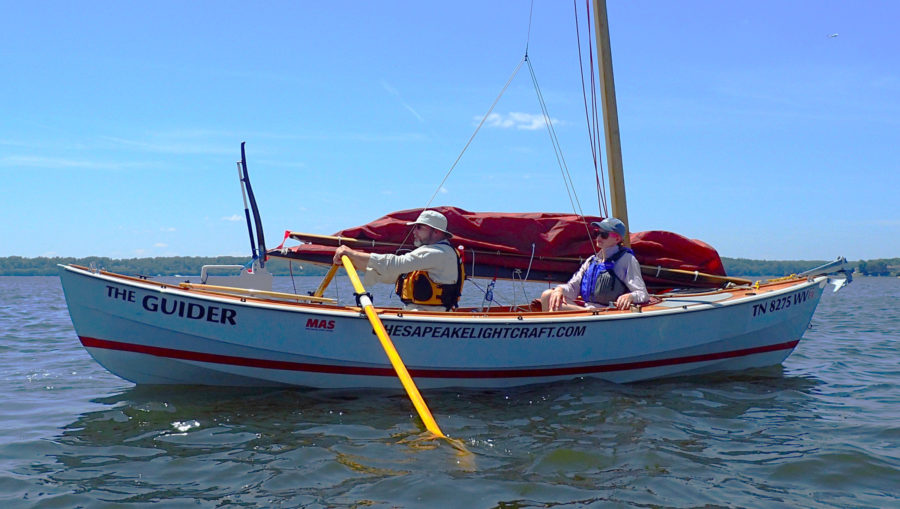
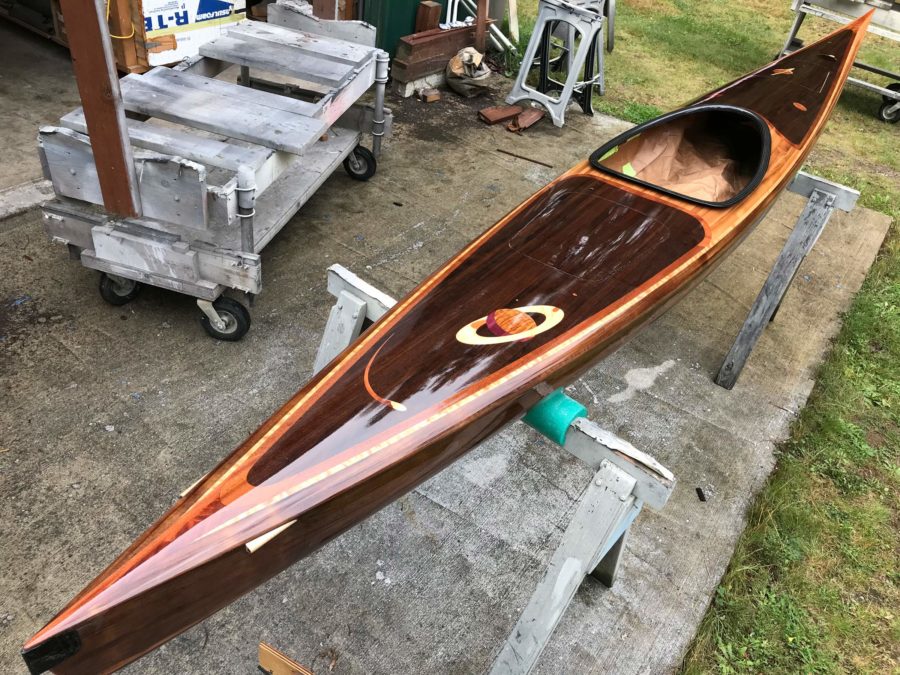
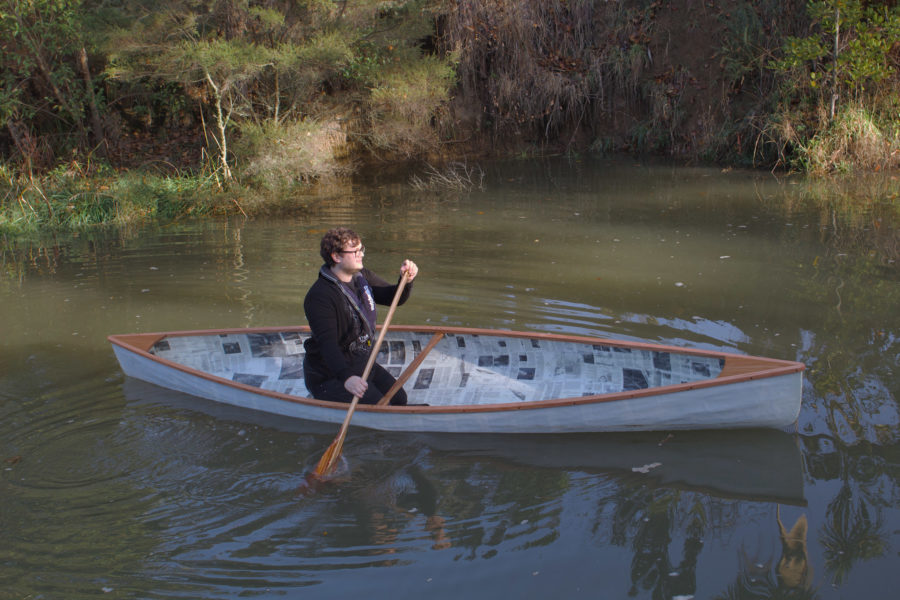
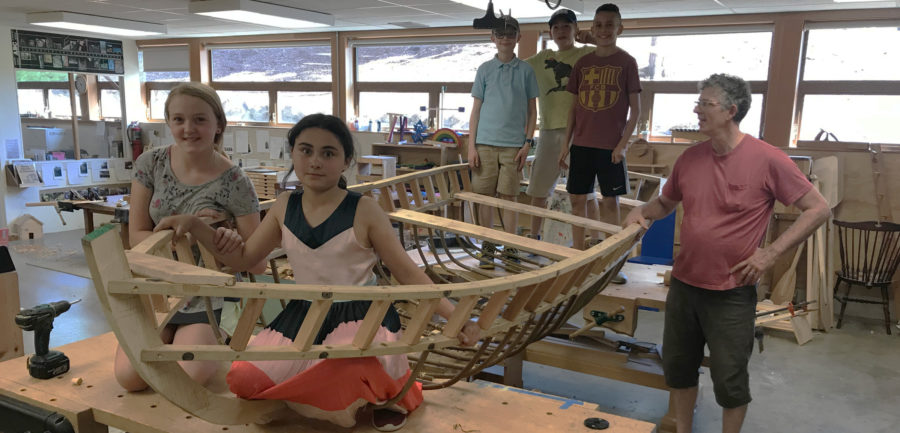
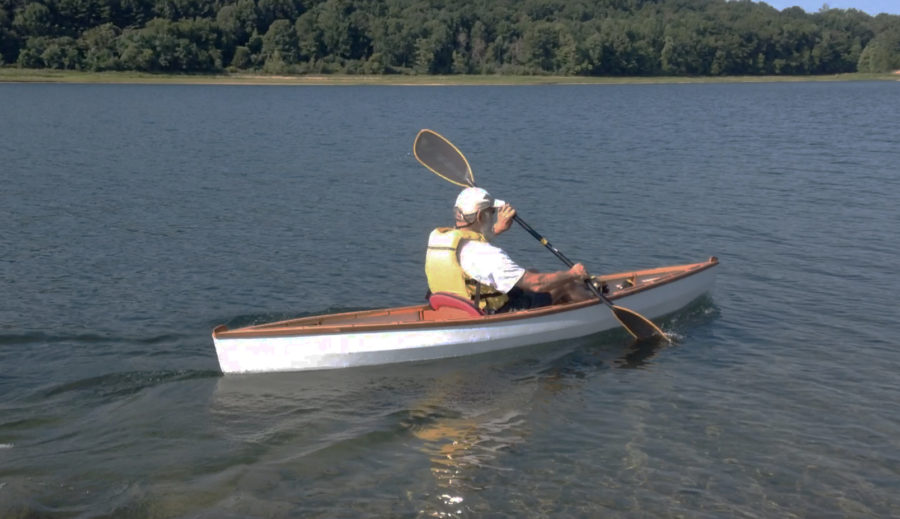
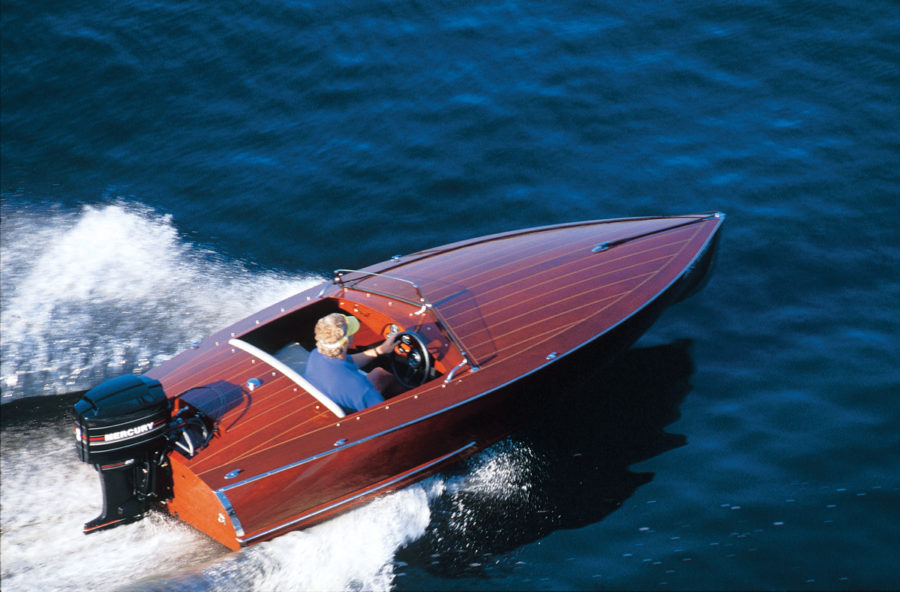
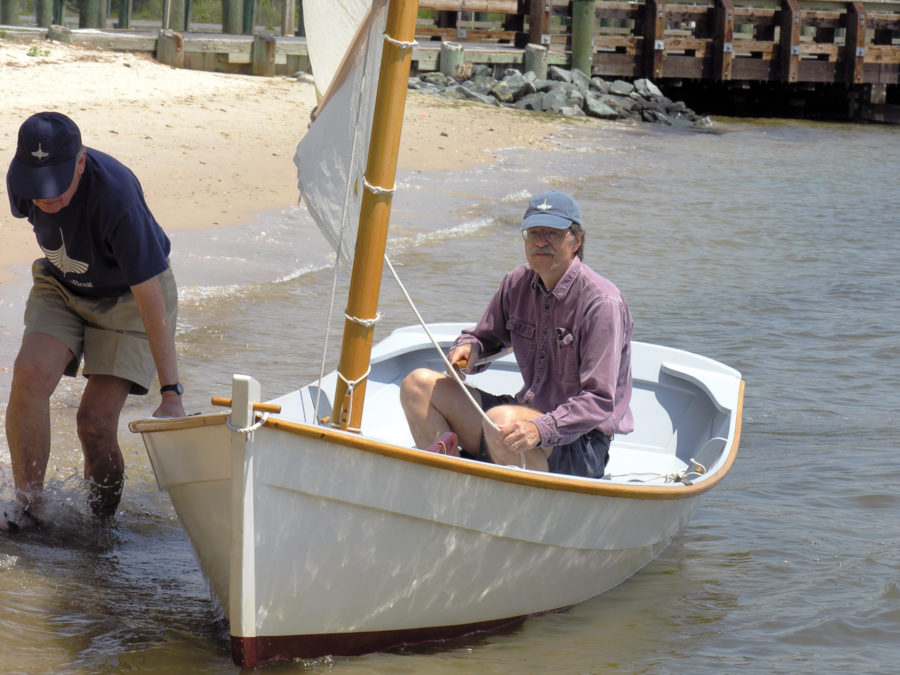

Great article! Really describes the feeling of the Savo boats. They are designed and built as racing boats—they have what they need for structure, nothing more—but they are much more than racing boats, as described above. They win races regularly in Finland, where 3,000 people will turn out for a good regional race and 10,000 for the big national races. (I may be a bit biased. I built both the Savos mentioned in the article.)
I think I was the first non-professional to build a Savo 650D in 2016 and was featured in the Dec 2016 issue of this magazine. Since then, I have rowed over 1,600 miles mostly on flat water lakes and rivers with the odd trip to the sea. All I can say is that I love the boat and the whole experience of owning it. It handles well, is fast, and just glides through the water. It is slightly hard work rowing one-up on a windy day and it doesn’t turn quickly, but the upside is it tracks as straight as an arrow. I just wish I lived in Maine and have to say I am in awe of anyone who completes the Race to Alaska.
Wonderful profile Leigh and Dameon! You have captured the essence of the Savo 650D beautifully and with so much more heart and soul than a simple recounting of the boat’s technical details.
I built a 650D two years ago, gaining quiet inspiration from your experiences in NORPPA along the coast of Maine, and the photos and information Walter and Tim have posted online (fortunately, I did not have to modify any buildings to construct my craft!).
The first time my Savo was launched, I was struck with how delicately she rests on the water. The boat truly “balances on the smooth surface of the water like a leaf that has just landed with a whisper, light as a feather.” Having not yet had the chance to test its (and my) mettle in larger sea states, it is reassuring to hear of your successful experiences off the coast of Maine and along the Inside Passage. It is a testament to the design that the boat is simultaneously gracile in calm conditions and robust and dry when things get rowdy.
I have recently begun building a 575 S. The relationship is clear, but the dimensions seem more manageable for a solo rower. I understand from Ruud that you are now working on a larger version of your expedition boat. I am interested in learning more about the design and your progress on the build.
So nice to hear from you Andrew! If you use Instagram, we’re posting photos of the new boat build on our rowingtowild account. It’s going to be a 4-person expedition version of a Savo, with a spot for a cox!
What a great article from Leigh and Dameon. In 2018 I built a Savo 650D, it made great fun to see how the ship was growing every day I worked at it. But the real pleasure came when I rowed in it for the first time. I was flying over the water! Since then I made many trips alone or with a second rower, be it my daughther, friend, or wife and even once with Ruud, the designer himself. Even with 100 pounds of camping gear we still managed to row up the river IJssel, which streams with an average of 2.5 knots. It is a wonderful design that gives lots of fun when building it and when rowing it.
Good exposure. Leave it to the yanks to tell a good story. I built a Savo 650 D two years ago and it is a great boat on the lakes and coastline of Ireland.
Years ago, I sailed in the Turku archipelago as I like Finland so much; later I came back to visit the opera festival in Savonlinna, but my dream was to come to Finland and row during the midsummer night, and I did it. Thanks to Ruud. June 2019, I borrowed Ruud’s boat and made a magical midsummer night row the lake nearby his house.
Wind, which was blowing during the day – not a surprise at solstice time – had disappeared for the evening and lake surface was like a mirror. The sun did not want to go to bed. just to have a peek over the trees to follow our outing and enjoy the beautiful lines of the SAVO and it’s so nice small wake.
This boat is stable enough for any rower, fast enough to enjoy outings, and easy and pleasant to row with light wooden oars. Not feathering makes the recovery easy and gentle on the forearms and wrists. Fast for racing, stable and gliding smoothly for long distance rowing.
COVID is delaying to have a SAVO see French waters, but waiting is part of the pleasure!
“…like a leaf that has just landed with a whisper, light as a feather…” Lovely language in this article, really befitting these wooden boats. I’ve very much enjoyed rowing our wooden double many a summer in Finland, and once even competed at the Blackburn challenge, the most fun racing I’ve ever experienced.
P.S. Here’s drone footage from a rowing session one summer evening in Finland.
The review of the Savo 650 D inspired one of our readers in France, Pierre Létang, to send this video he took of himself rowing a Savo 575 S in Finland.
—Ed.
I used to have something similar, and it was a delight to row – I’m picking the Savo would be even better.
But….. I notice that the equipped weight is given as 101 lbs., but the displacement as 441 lbs. Seems a bit odd – a boat (like any other floating object) displaces its own weight in water; i.e. if it displaces 441 lbs., then it weighs 441 lbs. Do the given figures mean that the boat with its equipment (oars etc.) on board weighs/displaces 101 lbs., but with crew aboard weighs/displaces 441 lbs.?
You’re right about the meaning of weight and displacement. The weight is usually given as either bare hull or the hull with it’s outfitting. That figure helps determine if you can carry a boat or have a trailer that can handle it. The displacement is the weight of the boat plus it’s recommended capacity for passengers and cargo. So for the SAVO 650 D, the difference between the two figures, 340 lbs, the maximum weight of crew and cargo.
—Ed.
Excellent explanation, Chris. Just want to add for the record that mine & Dameon’s crew weight alone equals 340 lbs, and we rowed the coast of Maine with probably 100 extra lbs of combined gear and drinking water (maybe more). So I’m not sure what the maximum safe load might be, but it’s certainly more than the recommended displacement. The Savo 650D handled excellently on that long trip, even in its heavily loaded condition and at times, in quite rough water.
I built a custom set of oars for use in a SAVO. I made them for Roger Swanson of Oarsman Tallow. They were dimensionally identical to the Finnish oars, but were lighter and balanced better. The loom was laminated using a red cedar core with 1/4″ ash caps fore and aft. I reproduced the curved blades with okoume. Handles were white oak to help balance. It was a fun engineering exercise. Never heard how they worked out. I still have the patterns and the jig for laminating the curved blades. I prefer traditional Culler oars and row dory style. I just get tripped up trying to row sliding-seat boats.